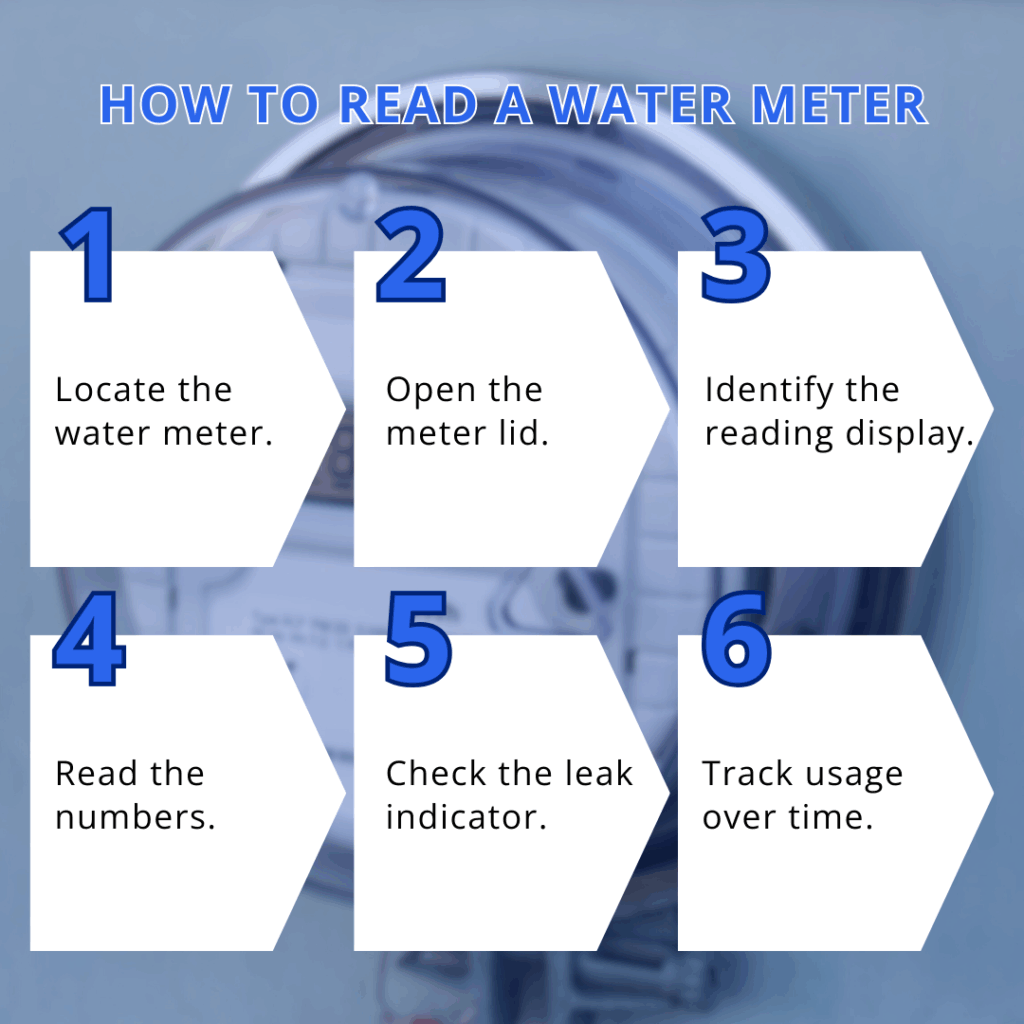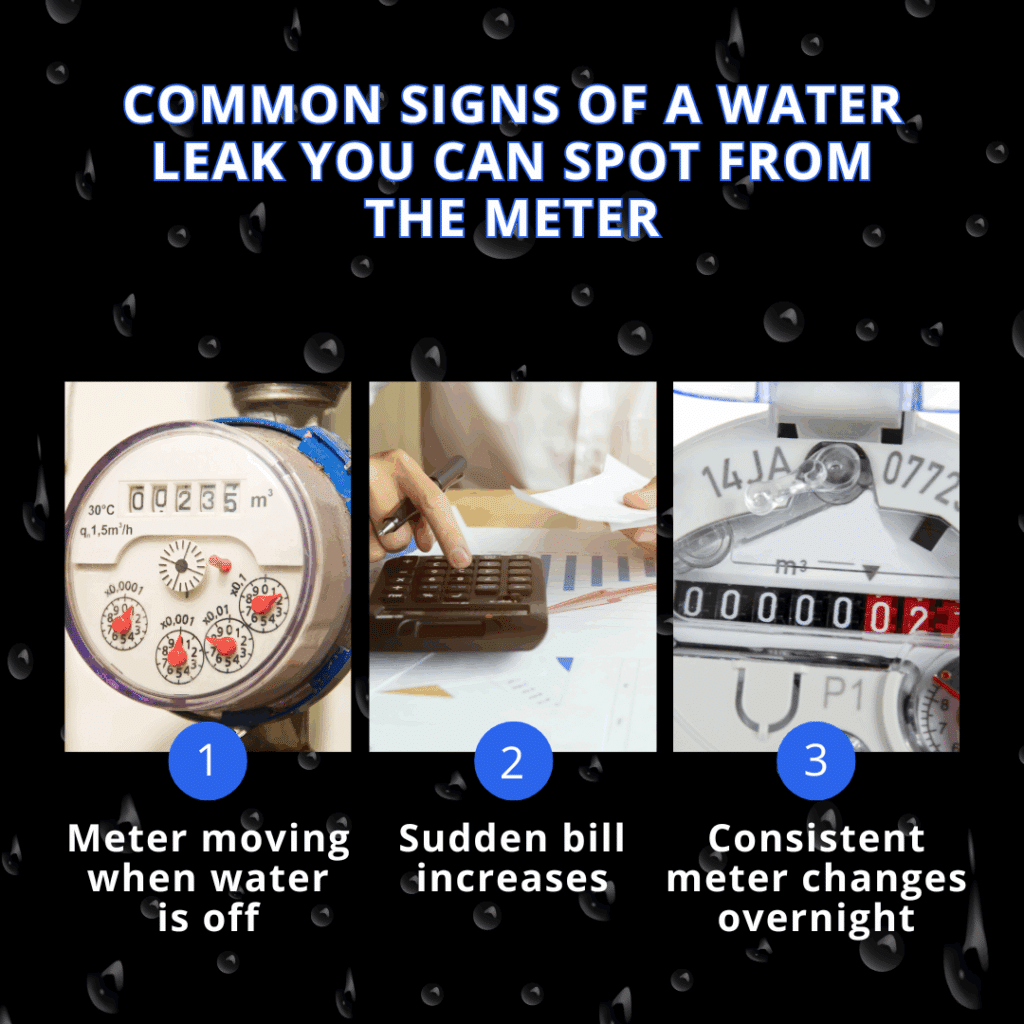Learning how to read a water meter to monitor water use is one of the easiest ways to track your household’s water habits, detect leaks, and save money. Your water meter gives you real-time information about how much water your property uses.
With just a few quick checks, you can spot waste, prevent costly plumbing problems, and manage your monthly bills more effectively.
What Is a Water Meter and Why Does It Matter?
A water meter measures the amount of water flowing into your home or building. Most meters are located in a utility box near the street or in a basement. They track usage in gallons or cubic feet and are read by your local water company to calculate your bill.
For homeowners, reading the meter isn’t just about paying the bill, it’s about control. By monitoring your water use yourself, you can:
- Spot hidden leaks before they cause damage
- Compare seasonal use, like higher summer irrigation
- Better understand which appliances or habits use the most water
According to the Environmental Protection Agency (EPA), the average American household uses about 300 gallons of water per day. Knowing how to check your own usage puts you in a better position to cut waste and save.

How to Read a Water Meter to Monitor Water Use
Reading your water meter is simpler than it sounds. Here’s a step-by-step guide:
Locate the meter
- Outdoor meters are usually in a concrete or plastic box near the curb or sidewalk.
- Indoor meters are often in basements, utility rooms, or near the main water line.
Open the meter lid
- Some lids can be heavy, so use a screwdriver or tool to lift them carefully.
Identify the reading display
- Analog meters have dials or a sweep hand similar to a clock.
- Digital meters display numbers on a small screen.
Read the numbers
- Write down the main numbers, which show total water use.
- Whole numbers usually measure cubic feet or gallons, while smaller dials or decimals show tenths.
Check the leak indicator
- Most meters include a small dial, triangle, or star that moves when water is flowing. If it moves when no water is in use, you may have a leak.
Track usage over time
- Compare today’s reading to a past reading. The difference shows how much water you’ve used between checks.
This simple process can be done monthly, or even weekly if you want to closely monitor your usage.
How Reading a Water Meter Helps Control Costs
Water bills can rise for many reasons: irrigation, leaks, or seasonal changes. By regularly checking your meter, you can find out why your bill is higher and take action.
For example:
- A running toilet can waste up to 200 gallons of water a day. That’s thousands of gallons every month, often without you realizing it.
By catching these problems early, you can avoid paying for wasted water. The EPA estimates household leaks waste nearly 10,000 gallons per year. That’s equal to about 300 loads of laundry.
Common Signs of a Water Leak You Can Spot from the Meter
One of the biggest advantages of reading your water meter is spotting leaks. Here are signs to watch for:
- Meter moving when water is off: If the leak indicator spins while no water is running, there’s a hidden leak.
- Sudden bill increases: A higher bill without lifestyle changes often points to a problem.
- Consistent meter changes overnight: Turn off all water before bed. If the reading changes by morning, there’s likely a leak.
Leaks aren’t always obvious. Underground leaks or damaged pipes can cause even more water loss and higher bills.

Should You Track Water Use Yourself or Call a Professional?
Homeowners can learn a lot by checking the meter themselves, especially when it comes to spotting obvious leaks or comparing monthly usage.
But sometimes, a professional is necessary. You may need expert help if:
- Your meter shows unusual use, but you can’t find a visible leak.
- You suspect underground or structural leaks.
- You manage multiple units or rental properties where water costs affect tenants.
This is where a trusted partner like Enviroquest is valuable. Their inspections and property management support help identify plumbing issues, track utilities, and save property owners money long-term.
Related Questions
How do I find my water meter if it’s outside?
Look for a covered box near the curb, sidewalk, or driveway. It’s usually marked “Water.”
How do I check if my water meter is accurate?
Shut off all water in your home and watch the meter. If it moves, there may be a leak or meter issue.
Can I lower my water bill just by reading the meter?
Yes. Tracking your usage helps you find warning signs fast and make changes that save money.
What is a leak indicator on a water meter?
A small dial or triangle that spins even with tiny amounts of water flow. If it moves when water is off, there’s a leak.
How often should I check my water meter at home?
At least once a month, or weekly if you want to closely monitor usage or suspect a leak.
Conclusion
Learning how to read a water meter to monitor water use helps you stay in control of your household expenses and prevent costly damage. By checking your meter regularly, you can spot leaks, track your habits, and make smart changes that save water and money.
For property owners, managers, or homeowners in Harrisburg, Enviroquest can help with inspections, utility tracking, and property management support to keep water use efficient and costs under control.
